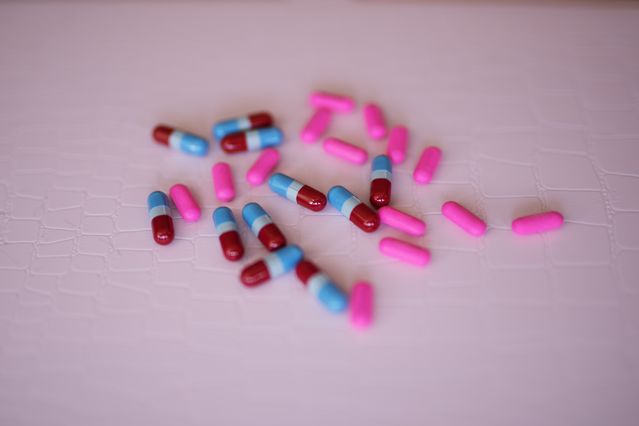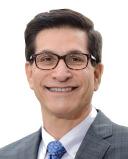ADHD
Will Adderall Be the New Opioid Crisis?
Despite lessons from history, we may be headed for another amphetamine epidemic.
Posted May 22, 2018 Reviewed by Devon Frye

Tom desperately wanted to succeed in law school, but he didn’t think he could outperform his classmates in his competitive program. Hoping for pharmaceutical help, he saw his doctor, then a neurologist, and lied about feeling unfocused and easily distracted to paint a picture of someone dealing with attention deficit/hyperactivity disorder (ADHD). He left the office with a prescription for Adderall. Adderall is the brand name for a mixed amphetamine pill that contains amphetamine and dextroamphetamine, two central stimulant drugs that are prescribed for ADHD.
At first, he thought the drug gave him an upper hand. He was energized, needed less sleep and could hold on to arcane details of legal cases. Over time, though, things whipsawed. He became restless and agitated, which frequently interrupted his study time. Focused attention gave way to obsessive thoughts. In his classes and work groups, he became confrontational and argumentative over minor issues. And as insomnia caused by the drugs took over, fatigue replaced the exuberance he felt when he started.
A Lesser-Known but Growing Concern
Adderall is a prescription amphetamine that helps people with ADHD improve their focus and manage other symptoms. While the disorder is best understood in children, in 2006 the American Journal of Psychiatry reported that 4.4 percent of U.S. adults also had ADHD. Adderall has also become popular among non-ADHD sufferers, who try to improve their performance at school or work.
Although mixed amphetamines can be a helpful medicine for people with ADHD, they carry a risk of misuse and abuse. Research shows Adderall abuse has increased on college campuses over the past 15 years, with some students diagnosing themselves with ADHD and seeking the “study drug” through doctors, friends, and other means in order to study longer and harder.
The prescription amphetamine crisis is growing and could catch up to the opioid epidemic in scope and damage. Opioids are taking center stage as the worst drug epidemic in history—but without intervention, prescribed psychostimulants like Adderall may be waiting in the wings.
This Has Happened Before
This is not the first nationwide amphetamine problem. The mid-1960s witnessed the first amphetamine addiction epidemic. The seeds were planted in 1929 when amphetamines were first developed, and in the 1960s, pills were widely prescribed for weight control and fatigue. Patients tended to be middle-aged, middle-class people who needed more energy or help coping with daily life. It was viewed as an innocuous medication. Like smoking in that era, there was no recognition that this medicine was potentially addictive.
People who grew up in that era remember the “Dr. Feelgoods” who sprouted up in quasi-medical practices and clinics around the country, reaping profits by freely dispensing amphetamines as weight loss aids, study aids and energy pills. Celebrities of the era were known to have received amphetamine-based treatments, including Cecil B. De-Mille, Alan Jay Lerner, Truman Capote, Tennessee Williams, and The Rolling Stones. It’s been documented that President John F. Kennedy’s physician gave him regular injections that included methamphetamine along with vitamins and hormones. One of the most famous amphetamine addicts of the era was Johnny Cash, who started using when his career took off and led a drug-fueled life for many years.
It was an era in which doctors medicated everything and easily dispensed “uppers” to keep patients alert. It was not until 1971 that the FDA set forth regulations that made it more difficult for doctors to justify medical usage and made it more burdensome for pharmacists to fill prescriptions. Sales eventually plummeted as people realized easy access was over.
It Can Happen Again
Similar to the opioid epidemic, the first amphetamine epidemic was iatrogenic—created by the pharmaceutical industry and physicians, who were usually well-meaning yet naïve about the dangers. The current crisis was reborn in the 1980s out of a combination of recreational drugs such as illicitly manufactured methamphetamine and an increased supply of illegal drugs. But the amphetamine resurgence in modern times has shifted back to the pharmaceutical industry and prescribing doctors, many of whom may be as well-meaning as the prescribers of the 1960s.
The most recent surge in amphetamine use in the U.S. is related to the increasing legal supply of attention deficit medications such as methylphenidate (Ritalin) and amphetamine (Adderall). Just as doctors who prescribe opioids want to help patients live pain-free, doctors who prescribe ADHD drugs for adults are trying to help them improve focus and performance. But they may not be looking far back enough into history—or the current opioid crisis—to recognize the addictive potential of these medications.
Smithsonian Magazine reported on the original amphetamine epidemic, noting, “By 1970, 5 percent of Americans—at least 9.7 million—used prescription amphetamines, and another 3.2 million were addicted.” It died down for a brief period, only make a comeback in the 1980s. Government surveys show that by the year 2004, three million Americans consumed amphetamine-type stimulants for non-medical reasons. This doubled from the decade earlier.
The current epidemic has surpassed the severity of the original epidemic at its peak. It has been reported that about 16 million prescriptions for stimulants like Adderall were written in 2012, which is about three times the number written in 2008. Intervention is needed so that it does not reach the same levels as the opioid epidemic. Just as physicians and hospitals are now establishing stricter policies on opioid prescriptions and public awareness has grown, we also need to take pause before writing (or accepting) a stimulant prescription.




